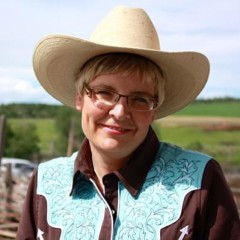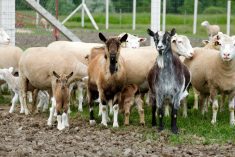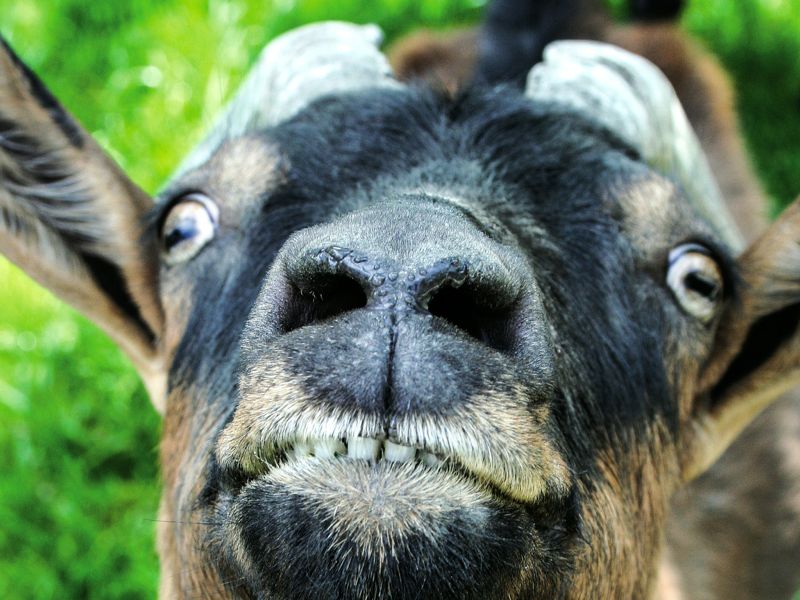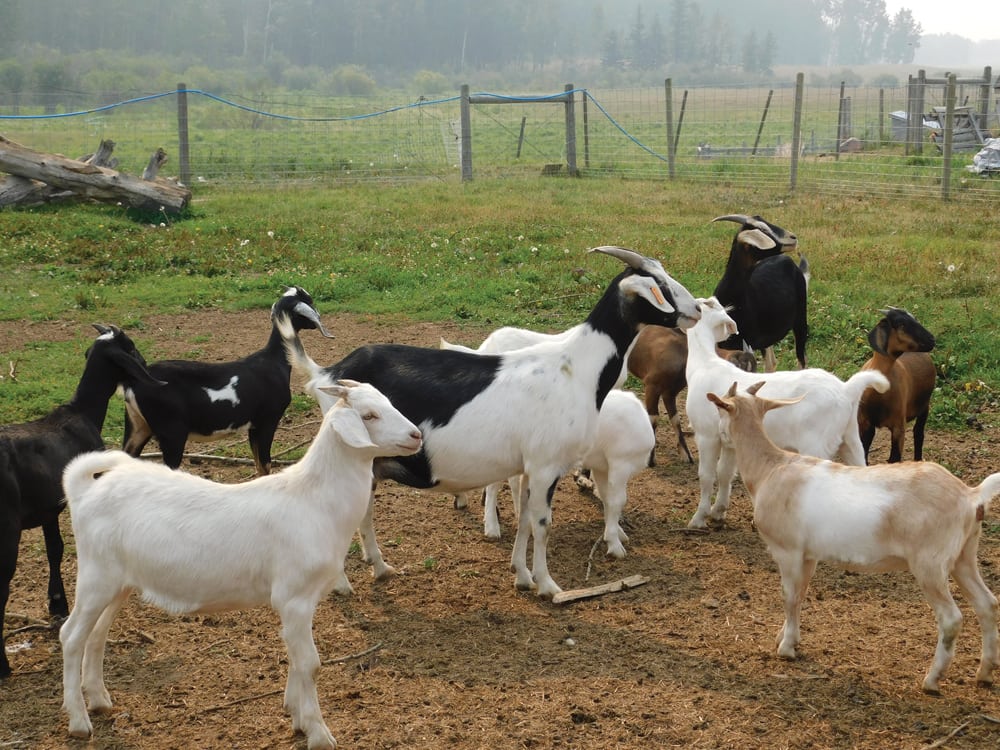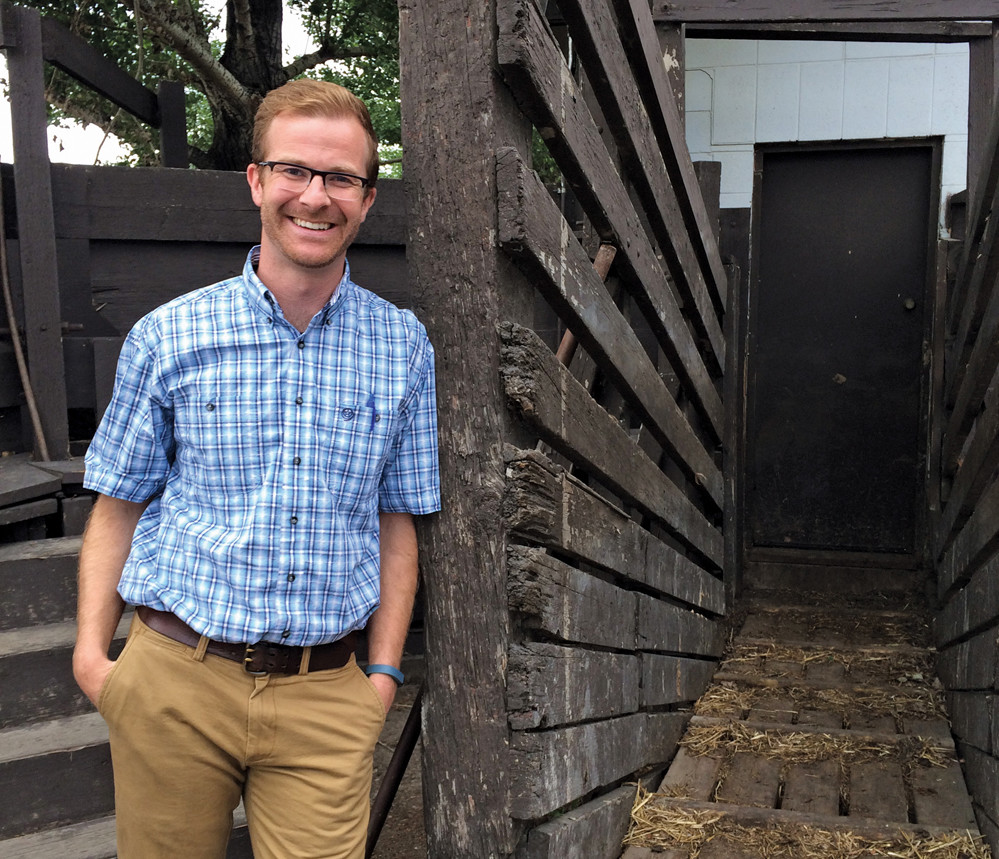Demand is not a problem facing Alberta’s goat industry these days — but supply certainly is.
With a growing number of Albertans hailing from countries where goat is a staple, producers simply can’t keep up with demand, said Laurie Fries, president of Alberta Goat Breeders.
“Our numbers are the lowest they’ve ever been,” the Edgerton goat breeder said during Red Deer’s Westerner Days.
The event features the only major goat show in the province, and participants said they hope their presence at the fair encourages more people to consider raising goats. The two-day show featured dairy, meat, and youth classes for goat producers.
Read Also

Mosquito-borne virus could be devastating to sheep breeding operations
Cache Valley virus, a mosquito-borne disease that infects small ruminants, could be a devastating hit to small operations.
A rebuild of the goat herd is starting, but it’s a slow process because of restrictions on where breeding stock can be sourced, said Fries.
“There’s very few breeders left, so if you’re in the breeding stock business, you can sell,” she said.
Goat producers can still import bucks from the U.S., but Fries said she is concerned the growth potential for the industry could be limited if the border was shut by the Canadian Food Inspection Agency over scrapie surveillance issues.
“We’re in talks on what we can do about this, but it’s not looking real great,” she said.
“There are no semen or embryo protocols even. I don’t know how we would get a different genetic pool into Canada.”
New commercial producers are desperately needed on Alberta’s goat scene, and Fries also said she hopes the Westerner Days show gets the word out. A show can be an important promotional and awareness tool for the industry, exposing people to live goats, and sharing information on the facts and opportunities of goat production, she said.
“There’s so many facets that you can go with goats.”
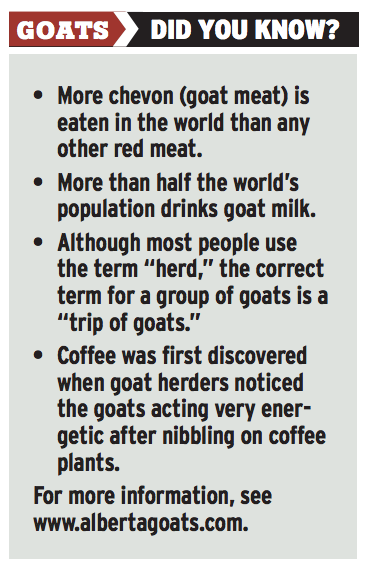 Along with meat, dairy, and fibre, Fries points to using goats for grass management as another available prospect.
Along with meat, dairy, and fibre, Fries points to using goats for grass management as another available prospect.
“There is a huge movement to multi-species grazing in the big pastures,” she said. “I’ve been dealing with a few ranchers out in that south country, in Longview and Sundre. They’d love to have someone come in.
“They’re cattlemen, they don’t want to own goats, but they want to promote the industry, because they can see the impact. They can grow grass, and help another industry with a hand up.”
Goat enthusiasts point out the small ruminants with the big personalities are a good fit for retired folks or young families starting out, or people in multi-generational farms and ranches who want to add value to the land. But they know they still have to do some image adjusting.
“It’s just getting away from that old mentality that goats are tap dancing on the hood of your car, eating tin cans,” said Fries. “As an industry we need to change that. The only thing that’s going to change that mentality is exposure, education, and promotion. It’s a growing industry, in its infancy. To get it rolling, we just need to get more people involved.
“Then from there, that’s when we can really get a strong commodity-type industry going. The market is there. If you’ve got a goat, and you’ve got it for sale, it’s gone. It’s just we cannot supply the demand.”
Westerner Dairy Show committee members were encouraged to see a jump in entries and interest in the dairy goat side of this year’s show, as well as a strong junior show with young goat exhibitors.
- From the Manitoba Co-operator: Ukraine to accept Canadian purebred sheep, goats
Robyn Andersen raises goats near Rimbey. It’s only her second year showing goats, but she jumped in and joined the Westerner Goat Show committee last year. She’s also secretary for the Alberta Goat Breeders.
“I’m a keener,” she chuckled.
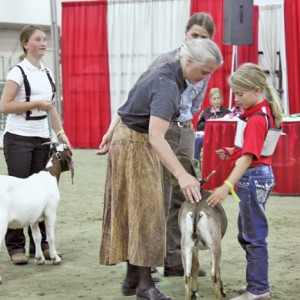
Andersen chose the dairy goat route, and milks six does at her Kid-napped Farm. She said she’s excited about the future for the goat sector and pleased with the response this year.
“In 2013, we only had four farms here at the show,” she said. “In 2014, there’s 11 farms, and we doubled our entries. We’ve got three farms from Saskatchewan. Both of our judges travelled 12 hours to get here, and brought their own strings of goats as well. That was very promising.”
Andersen also sees the possibility for a meat/dairy crossover class down the road.
“In five years, (we could be) having a half-and-half buck show, we call them. Goats that are half-boer, half-dairy, that are going to add milk production to a meat herd.”
With the quality and size of this year’s goat show, the Red Deer committee would like to put forward a bid to host the West National Goat Show next year.
“We did some extra fundraising, and we’re hoping our bid will look better for 2015,” said Andersen. “Then we would have goats from Vancouver Island to western Ontario that will come. That would be huge for the dairy goat industry.”
- More chevon (goat meat) is eaten in the world than any other red meat.
- More than half the world’s population drinks goat milk.
- Although most people use the term “herd,” the correct term for a group of goats is a “trip of goats.”
- Coffee was first discovered when goat herders noticed the goats acting very energetic after nibbling on coffee plants.
For more information, see www.albertagoats.com.

